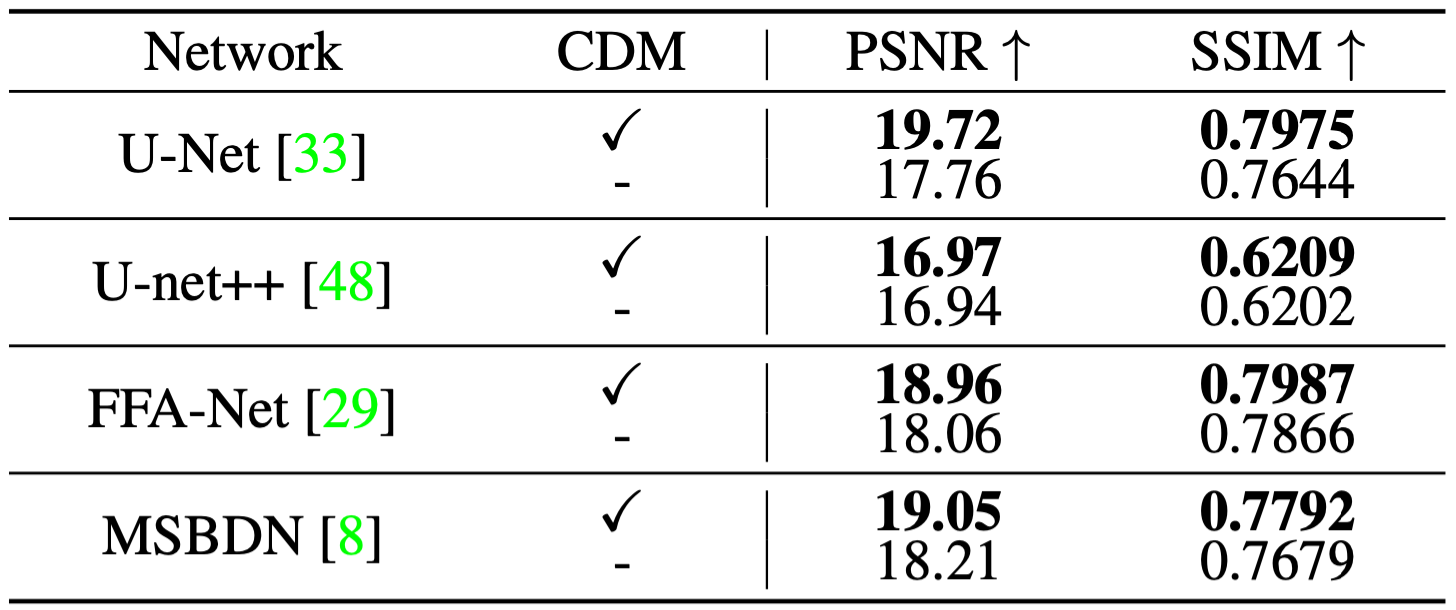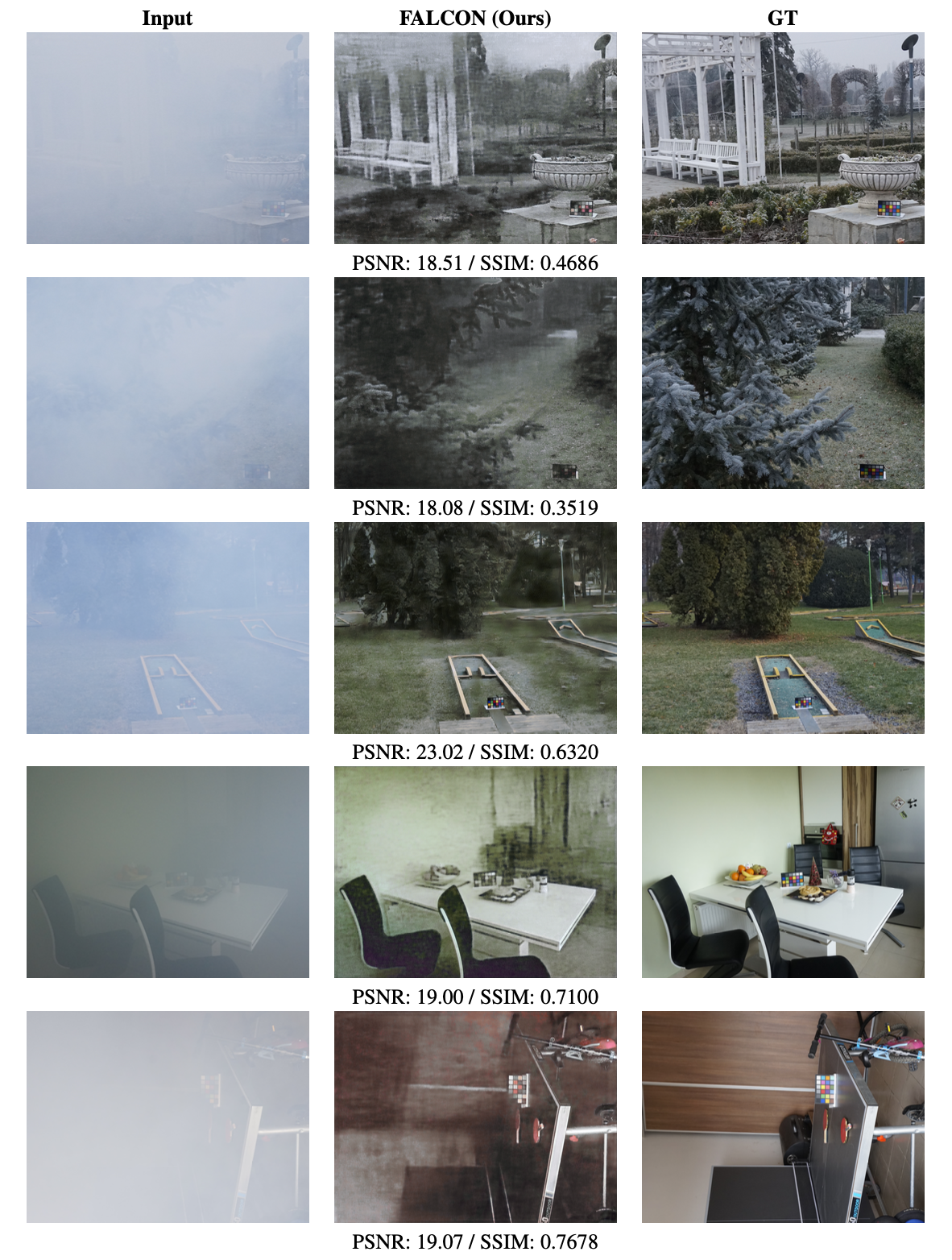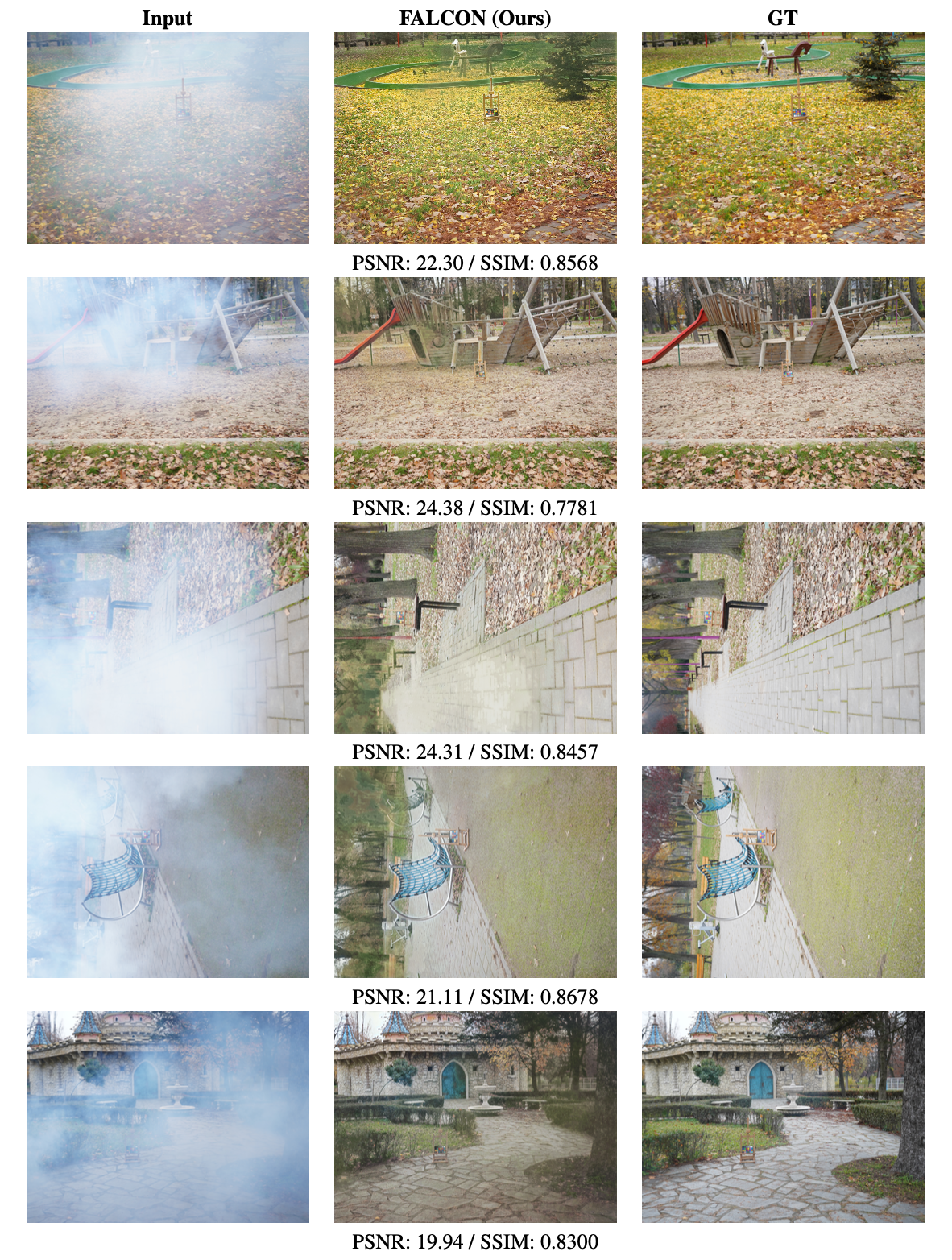
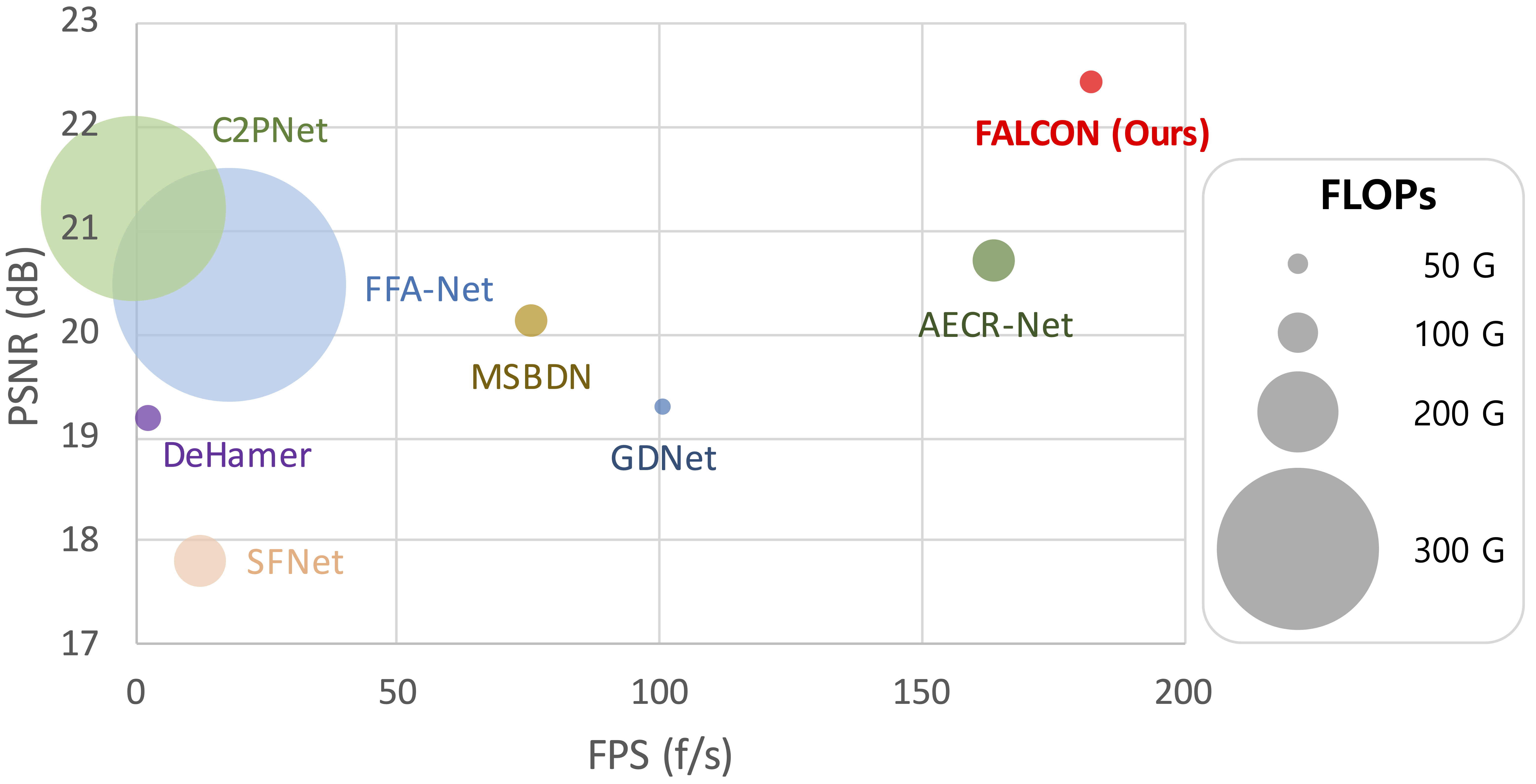
Abstract
Image dehazing, eliminating atmospheric interference like fog and haze, remains a pervasive challenge crucial for robust vision applications such as surveillance and remote sensing under adverse visibility.
While various methodologies have evolved from early works that predict haze-related features to dehazing deep learning networks, they innately prioritize dehazing quality metrics, neglecting the need for real-time applicability in time-sensitive domains like autonomous driving. Considering the need for a pioneering hybrid paradigm in dehazing, we present FALCON, a single-image dehazing system achieving state-of-the-art performance on both quality and speed.
Particularly, we leverage the underlying haze distribution via a novel approach called Continuous Density Mask (CDM).CDM serves as a continuous-valued mask input prior and auxiliary loss, allowing model to explicitly identify pixel-wise haze density.We also implement the haze density calculation in a differentiable manner.
Further, we introduce a low model-workload recipe that globally expand the receptive field by adding a single bottleneck module to U-Net.Comprehensive experiments involving multiple state-of-the-art methods and ablation analysis demonstrate FALCON's exceptional performance in both dehazing quality and speed (i.e., >180 frames-per-second), quantified by metrics such as FPS, PSNR, and SSIM.
Methods
.jpg)
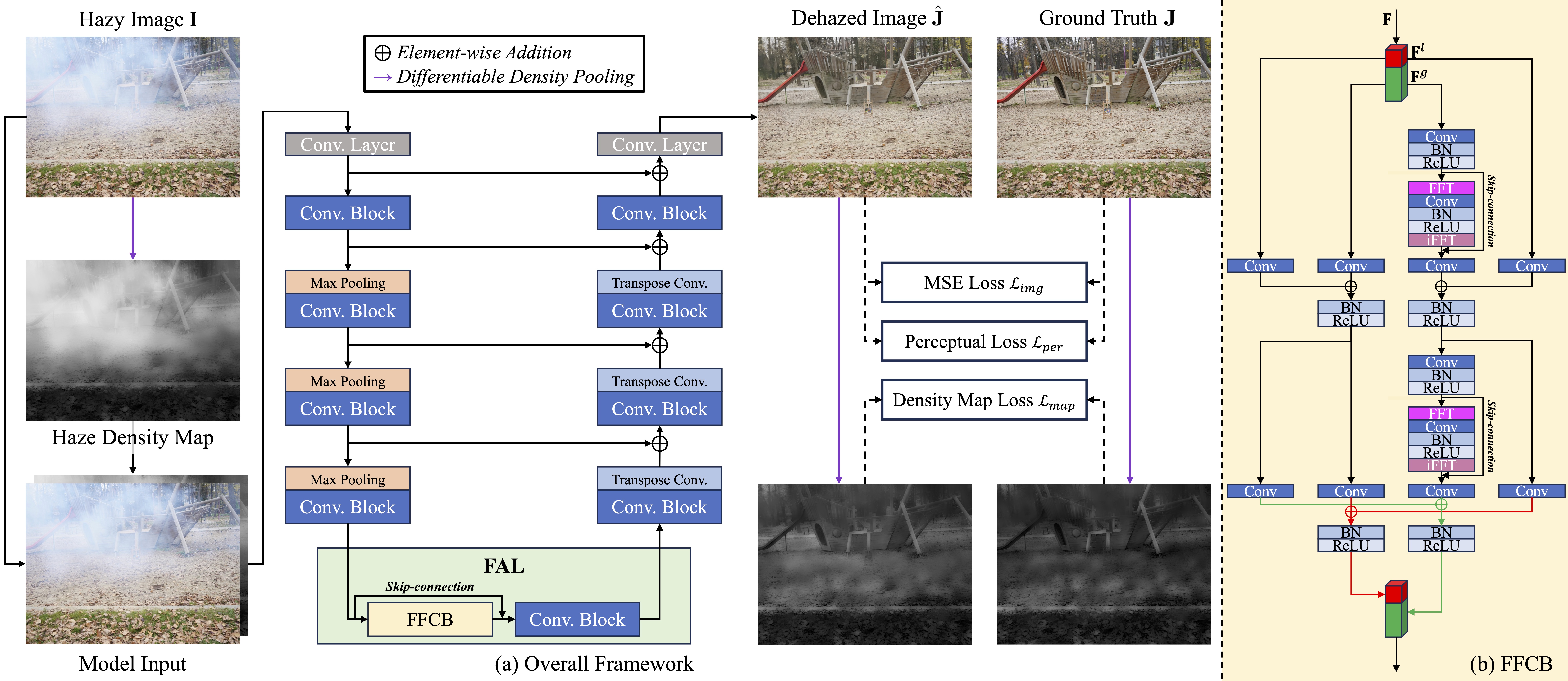
(1) First, our model uniquely computes the haze density map, namely, Continuous Density Mask (CDM), based on the principle from the Dark Channel Prior (DCP)~\cite{dcp}. CDM is then used as a input prior and auxiliary loss. In particular, the original density map calculation involves a nested minimization which is seemingly non-differentiable and CPU-intensive. However, we identify that this process easily equates to a special type of pooling, turning the density map calculation to be an extremely computationally efficient process.
(2) Next, we utilize Frequency Adjoint Link (FAL) as a bottleneck module which greatly improves the vanilla U-Net~\cite{unet} by efficiently expanding the receptive field with minimal network size increase.
(3) Lastly, our differentiable density map estimation allows us to incorporate a new kind of loss function based on the density map.
Qualitative Results
Quantitatve Results

Versatility of Continous Density Mask
